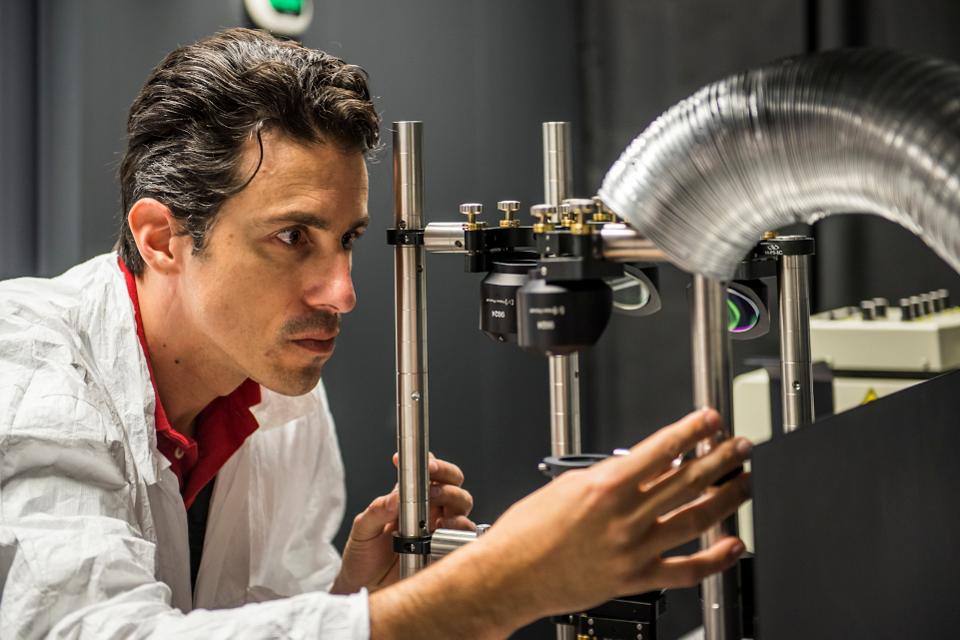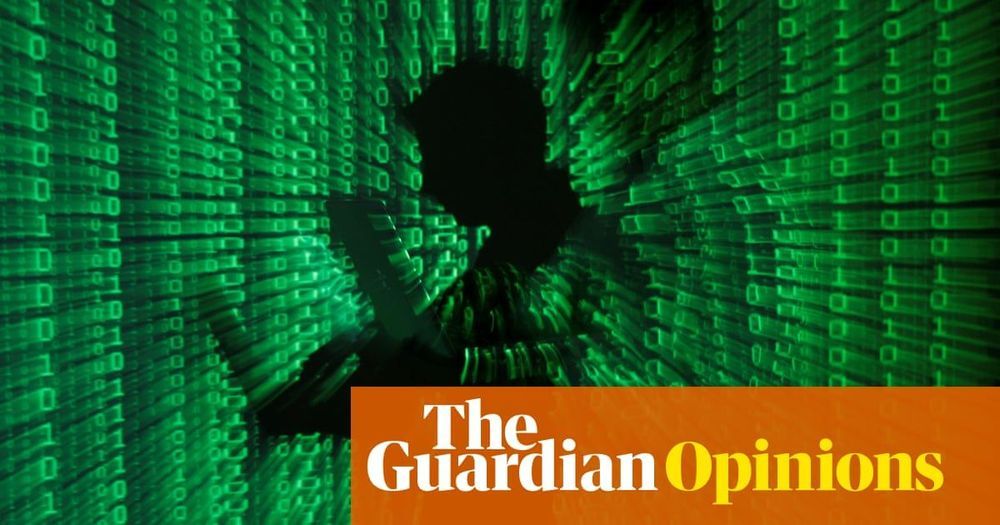Could a cryptographic system rooted in chaos theory herald an age of “absolutely unbreakable” encryption?



Entanglement, once called “spooky action at a distance” by Einstein, is the phenomenon in which the quantum states of separated particles cannot be described independently. This puzzling phenomenon is widely exploited in the quantum physicist’s toolbox, and is a key resource for applications in secure quantum communication over long distances and quantum cryptography protocols. Unfortunately, entangled particles are easily disturbed by their surroundings, and their entanglement is readily diminished by the slightest interaction with the environment.
In a recent study published in the journal Physical Review X, an international team of physicists from Austria, Scotland, Canada, Finland and Germany have demonstrated how quantum entanglement can be strengthened to overcome particle loss or very high levels of noise, which are inevitable in real-life applications outside the laboratory. This strengthening is accomplished by departing from commonly used two-level quantum bits, or qubits. Qubits are bi-dimensional systems, the quantum analogue to the classical bit, with values zero or one. In this study, the researchers instead employed entanglement of systems with more than two levels. By entangling particles of light through their spatial and temporal properties, scientists have now observed the survival of quantum entanglement under harsh environmental conditions for the first time.
When it comes to distributing particles of light outside of a protected laboratory, the environmental conditions are identical to the tested ones. Therefore, the experiment is not only a proof-of-principle implementation, but is ready for long-distance quantum communication under real-world conditions. This new method could hence prove helpful for distributing entanglement in a future quantum internet.

O.o…
The communications system of Mexico’s oil giant Pemex is still suffering the lingering effects of a cyberattack that occurred earlier this month, sources from the company told Bloomberg.
A ransomware attack caused administrative operations at Pemex to grind to a halt on November 10, with the company announcing the resumption of work soon after, saying the actual attack had been prevented.
The attackers used the Ryuk ransomware, which specifically targets companies with annual revenues of between $500 million and $1 billion. The Ryuk ransomware gets dropped into a network by another malware and soon after begins encrypting files. Yet the encryption begins with a delay, which gives the attackers time to study their target and how much money they could extort from it.

Google has increased the maximum prize for its Android bug bounty program to $1 million for anyone who can compromise the Titan M security chip found in its Pixel phones. The top prize is for a “full chain remote code execution exploit with persistence” of the dedicated security chip. On top of that, there’s an additional 50 percent bonus if a security researcher is able to find an exploit on specific developer preview versions of Android, resulting in a potential prize of $1.5 million. The new rewards take effect starting today.
Introduced with 2018’s Pixel 3, Google’s Titan M security chip cordons off your smartphone’s most sensitive data from its main processor to protect against certain attacks. Google says the chip offers “on-device protection for login credentials, disk encryption, app data, and the integrity of the operating system.” Since its introduction, the chip has also been integrated with Android’s security key functionality where it’s used to store a person’s FIDO credentials. Suffice it to say, the integrity of the Titan M is an important element for the security of recent Pixel devices.

Law enforcement and technologists have been arguing over encryption controls for more than two decades. On one side are privacy advocates and tech bosses like Apple’s chief executive, Timothy D. Cook, who believe people should be able to have online communications free of snooping. On the other side are law enforcement and some lawmakers, who believe tough encryption makes it impossible to track child predators, terrorists and other criminals.
After years of on-and-off debate over nearly snoop-proof security, the industry is girding for new pressure from law enforcement around the world.

Stadelmann said that Komodo is similar to Ethereum but it is 100% independent, free and open-sourced platform.
“As the world is getting digitised, it is all based on binary digits. Binary digits can have either 1 (on) or 0 (off). We don’t speak of bits anymore but quantum qubits or quantum bits, which can be in both 1 and 0 states at the same time. This qubit can attain so many states at the same time and they are also able to process calculations at a much faster rate than classical computers,” he said.
As a blockchain platform, Stadelmann said that Komodo is trying to solve the problem and has implemented quantum-safe cryptographic solutions for the past couple of years which will not be able to crack cryptographic signatures.

Everis, an NTT DATA company and one of Spain’s largest managed service providers (MSP), had its computer systems encrypted today in a ransomware attack, just as it happened to Spain’s largest radio station Cadena SER (Sociedad Española de Radiodifusión).
While the ransomware attacks were not yet publicly acknowledged by the company, the ransom note left on Everis’ encrypted computers has already leaked and BleepingComputer can confirm that the MSP’s data was infected using the BitPaymer ransomware.
We face complexity, ambiguity, and uncertainty about the future consequences of cryptocurrency use. There are doubts about the positive and negative impacts of the use of cryptocurrencies in the financial systems. In order to address better and deeper the contradictions and the consequences of the use of cryptocurrencies and also informing the key stakeholders about known and unknown emerging issues in new payment systems, we apply two helpful futures studies tools known as the “Future Wheel”, to identify the key factors, and “System Dynamics Conceptual Mapping”, to understand the relationships among such factors. Two key scenarios will be addressed. In on them, systemic feedback loops might be identified such as a) terrorism, the Achilles’ heel of the cryptocurrencies, b) hackers, the barrier against development, and c) information technology security professionals, a gap in the future job market. Also, in the other scenario, systemic feedback loops might be identified such as a) acceleration of technological entrepreneurship enabled by new payment systems, b) decentralization of financial ecosystem with some friction against it, c) blockchain and shift of banking business model, d) easy international payments triggering structural reforms, and e) the decline of the US and the end of dollar dominance in the global economy. In addition to the feedback loops, we can also identify chained links of consequences that impact productivity and economic growth on the one hand, and shift of energy sources and consumption on the other hand.
Watch the full length presentation at Victor V. Motti YouTube Channel

Entanglement is one of the properties specific to quantum particles. When two photons become entangled, for instance, the quantum state of the first will correlate perfectly with the quantum state of the second, even if they are at a distance from one another. But what happens when three pairs of entangled photons are placed in a network? Researchers at the University of Geneva (UNIGE), Switzerland, working in partnership with Tehran’s Institute for Research in Fundamental Sciences (IPM), have proved that this arrangement allows for a new form of quantum correlation in theory. When the scientists forced two photons from separate pairs to become entangled, the connection was also made with their twin photon present elsewhere in the network, forming a highly-correlated triangle. These results, which you can read all about in the journal Physical Review Letters, create the potential for new applications in cryptography while reviving quantum physics at its most fundamental level.
Entanglement involves two quantum particles – photons, for example – forming a single physical system in spite of the distance between them. Every action performed on one of the two photons has an impact on its “twin” photon. This principle of entanglement leads to quantum non-locality: the measurements and statistics of the properties observed on one of the photons are very closely correlated with the measurements made on the other photon. “Quantum non-locality was discovered theoretically by John Stewart Bell in 1964,” begins Nicolas Brunner, associate professor in the Department of Applied Physics in UNIGE’s Faculty of Science. “This showed that photon correlations are exclusively quantum in nature, and so can’t be explained by conventional physics. This principle could be used to generate ultra-secure encryption keys.”

And yet, in the midst of the greatest computer security crisis in history, the US government, along with the governments of the UK and Australia, is attempting to undermine the only method that currently exists for reliably protecting the world’s information: encryption. Should they succeed in their quest to undermine encryption, our public infrastructure and private lives will be rendered permanently unsafe.
The US, UK and Australia are taking on Facebook in a bid to undermine the only method that protects our personal information.
• Edward Snowden is a US surveillance whistleblower.